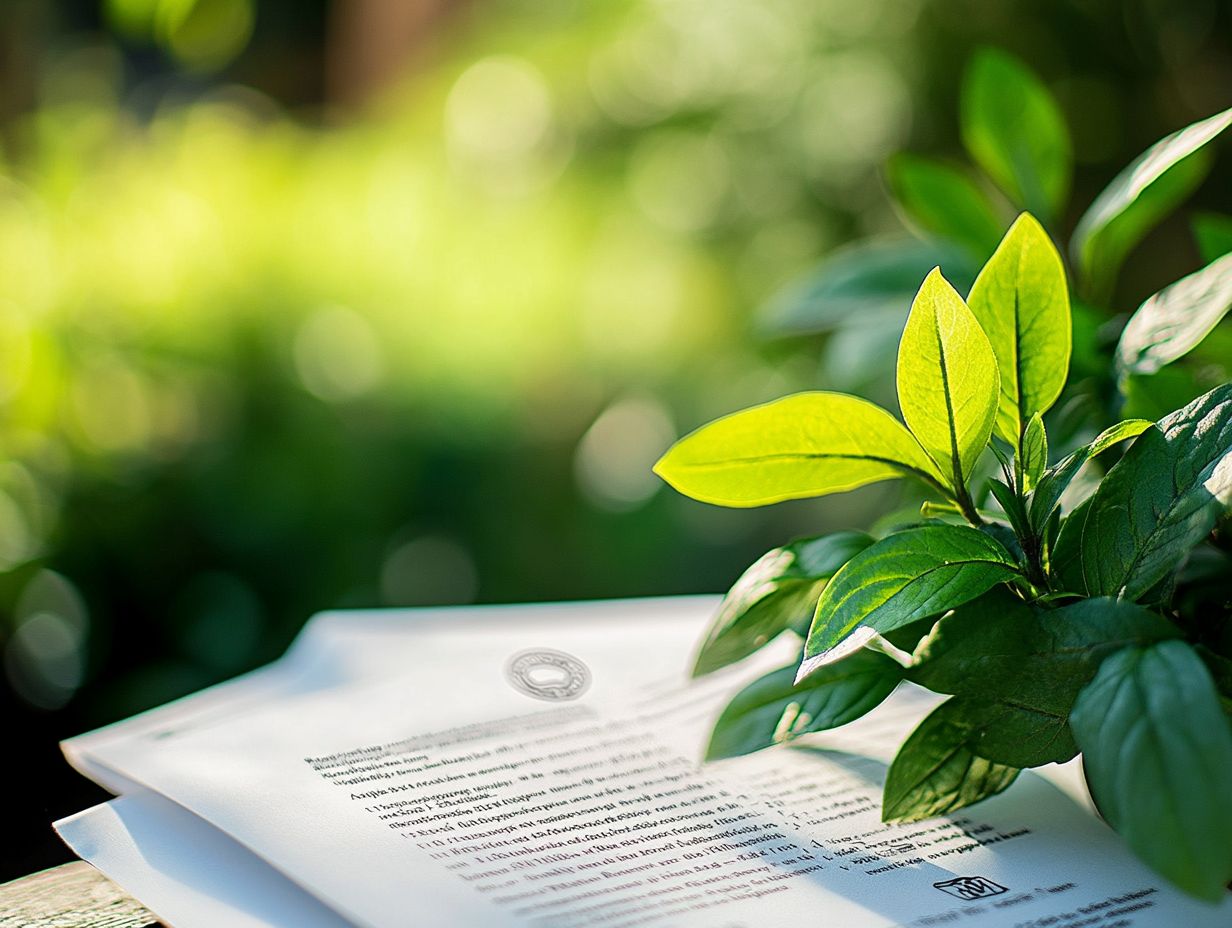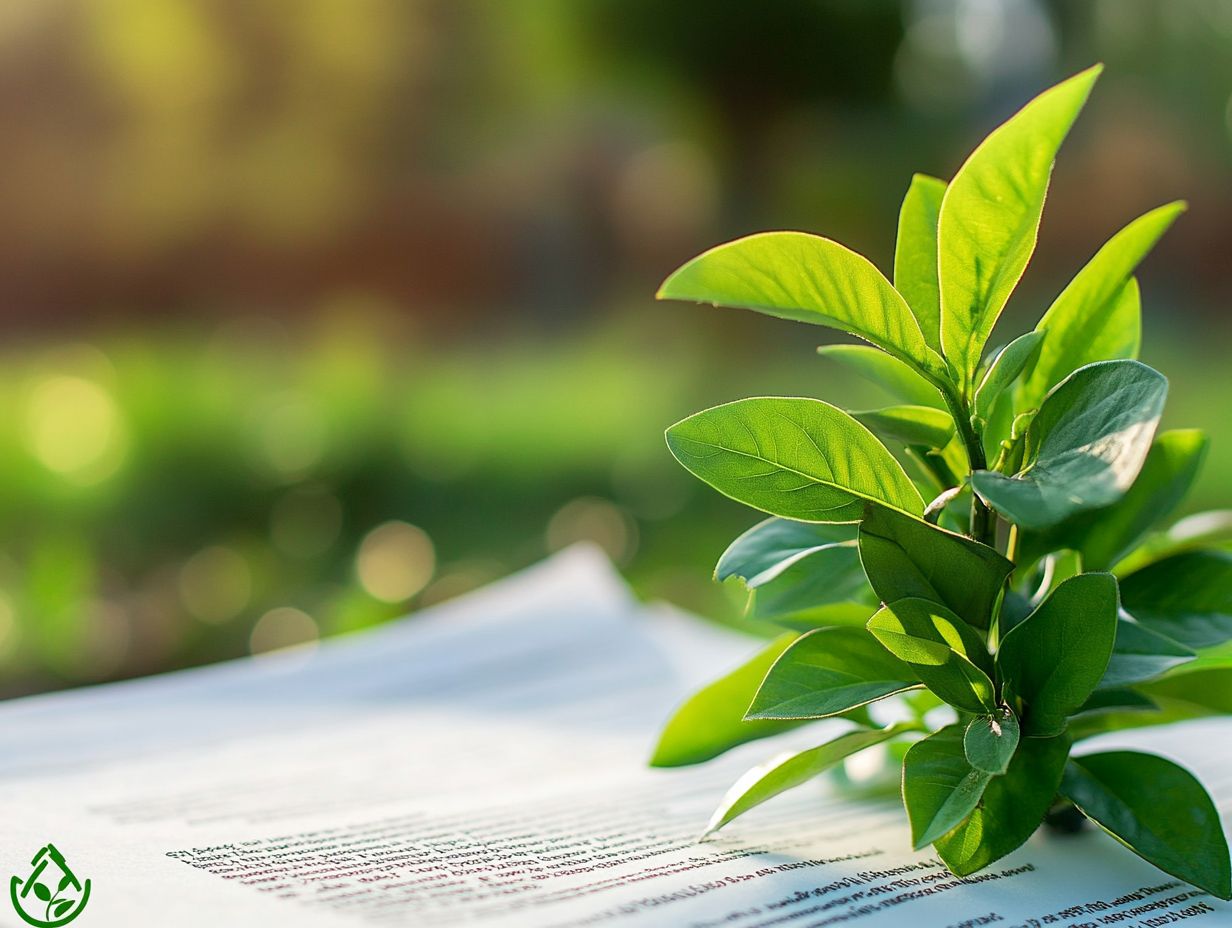What is a Plant Patent? Key Features Explained
Plant patents represent a vital component of legal protection, crafted to safeguard new varieties of plants that are distinct, novel, and stable.
This guide will provide you with an in-depth understanding of the criteria necessary to obtain a plant patent, along with the exclusive benefits they confer, including legal protection against infringement.
You ll also delve into the application process and uncover the limitations associated with these patents.
Explore how these legal instruments serve as essential allies in horticulture and agriculture, ensuring that innovation thrives.
Contents
Key Takeaways:

Plant patents are your shield against unauthorized copying of new plant varieties. Meet specific criteria, and you gain exclusive rights to your creation!
Understanding Plant Patents
Understanding plant patents is essential for you if you re in agriculture or biotechnology.
These patents provide legal protection and patent rights, enabling inventors to safeguard their unique plants and plant varieties.
In the United States, the United States Patent and Trademark Office (USPTO) grants plant patents specifically for plants that are grown without seeds and exhibit distinct characteristics while meeting certain patentability criteria.
This innovative form of legal protection not only promotes sustainable agricultural practices but also encourages competition in breeding enhancements, giving patent holders exclusive rights to their inventions.
Definition and Purpose
A plant patent is a valuable form of legal protection available in the United States for those who develop a unique plant variety through asexual reproduction. This legal framework ensures that you, as the inventor, enjoy exclusive rights to propagate, sell, or distribute your newly created plant.
By safeguarding your innovations, this protection encourages advancements in agricultural technology. It enables scientists and agriculturalists like you to invest time and resources into developing superior crops, which can have far-reaching benefits for food production and sustainability.
For patent owners, this creates a favorable landscape for commercialization while fostering further research and development efforts. The agriculture industry at large reaps the rewards as well, benefiting from enhanced crop varieties that lead to increased yields and improved environmental resilience.
Criteria for Obtaining a Plant Patent

To secure a plant patent, you must meet particular patentability criteria. This involves showcasing the distinctiveness of your plant and offering a thorough botanical description that captures its essential characteristics.
Novelty and Distinctiveness Requirements
Novelty and distinctiveness are essential for plant patent applications, ensuring that only truly unique plants receive the legal protection they deserve under patent law.
These principles form the foundation of innovation in the horticultural industry, effectively preventing competitors from imitating and exploiting new plant varieties without your consent.
By mandating that each plant meets specific criteria for patent claims, the system encourages you, as a breeder, to invest your time and resources into developing distinctive plants that showcase unique traits.
This approach cultivates a more vibrant competitive landscape, allowing you to enjoy the rewards of your hard work while simultaneously propelling advancements in agriculture.
Ultimately, this enriches the diversity of available plant varieties and enhances consumer choices while promoting sustainable practices.
If you have a unique plant variety, consider applying for a plant patent to protect your innovative creation!
Eligible Plant Types
Eligible plant types for patent protection primarily include those that are grown from cuttings or other methods rather than seeds, such as roses, fruit trees, and various vegetable varieties. This means that the reproduction process relies on methods like grafting and layering, ultimately producing genetically identical plants.
For instance, certain hybrid roses, carefully bred for specific colors and bloom shapes, can qualify for patents due to their unique traits. Similarly, patented apple varieties like Honeycrisp stand out with distinct flavors and textures that emerge from selective breeding.
By fostering innovation in horticulture, these patented varieties enable breeders to protect their work while enhancing biodiversity in gardens and orchards.
Benefits of Plant Patents

Securing a plant patent comes with exciting advantages! You gain exclusive rights that can lead to increased profits and innovative breakthroughs in sustainable agriculture.
Exclusivity and Protection from Infringement
One of the main benefits of a plant patent is the exclusivity it provides, protecting your interests against competitors. This exclusivity gives you a significant competitive edge in the market, as it legally bars others from producing, using, or selling your patented variety without your explicit permission.
This protective barrier encourages innovation. You can recoup your investment in research and development while ensuring that your unique gene variations or breeding techniques are shielded from unauthorized use. By enforcing your patent claims, you deter potential infringement and cultivate an environment where market players are motivated to innovate responsibly.
This approach has broad implications for overall market competition, benefiting you and the entire industry.
Process of Obtaining a Plant Patent
The journey to obtaining a plant patent involves a detailed application process that requires thorough documentation.
You need to prepare for an extensive review by a patent examiner to ensure that everything meets the high standards for legal protection. Having a plant patent means you can profit from your hard work.
Application and Examination Process

The application and examination process for a plant patent is no small task. It requires a comprehensive submission that details the plant’s characteristics and breeding history while undergoing rigorous scrutiny by a patent examiner.
This careful approach ensures that every aspect, including potential benefits, is assessed. The patent examiner plays a key role, ensuring that applications meet crucial standards for novelty and utility.
As an applicant, it’s essential to track your application using its unique patent number. This practice allows for smooth communication and monitoring of your patent s status, helping to safeguard your intellectual property rights in agriculture.
Enforcing a Plant Patent
Enforcing a plant patent is crucial for patent holders like you, as it protects your rights and offers various legal options in case of infringement.
Upholding your rights not only safeguards your innovation but also allows you to take immediate action if someone else infringes on your intellectual property.
Legal Options and Remedies for Infringement
As a patent holder, you have several legal avenues to address infringements. This includes the ability to pursue damages and seek injunctions that protect your patent rights.
Beyond these traditional remedies, consider mediation and arbitration. These alternative dispute resolution methods can lead to quicker outcomes, helping you avoid lengthy and cumbersome court processes.
Understanding the extent of the competitive harm caused by infringement is vital in quantifying your damages. It s wise to think about preemptive strategies, such as conducting regular audits and proactively enforcing your rights, to deter potential infringers from encroaching on your intellectual property.
By effectively combining corrective and preventive measures, you can significantly strengthen your competitive position and protect your valuable innovations.
Limitations of Plant Patents
Plant patents provide legal protection but come with specific limits and rules. You need to understand these before applying.
Exclusions and Restrictions
You cannot patent naturally occurring plants or those not reproduced asexually. This limitation can affect your patent application.
For example, plants found in the wild can’t be patented, so breeders like you cannot claim rights over these valuable resources.
Restrictions on sexually reproduced plants may also stifle innovation in agriculture. Knowing these exclusions helps you navigate the patent process smoothly.
Frequently Asked Questions
What is a Plant Patent?
A plant patent is a form of intellectual property protection granted by the government, specifically for a new and distinct variety of plant. It gives the owner exclusive rights to control the production, use, and sale of that particular plant for a set period of time.
What are the key features of a Plant Patent?
The key features of a plant patent include:
- Protects new and distinct plant varieties
- Exclusive rights for production, use, and sale
- Valid for 20 years from the date of filing
- Must be registered with the US Patent and Trademark Office
- Must be asexually reproduced or reproduced from cuttings
- Must be different from any other known plant variety
Who can apply for a Plant Patent?
Any person who has invented or discovered a new and distinct plant variety can apply for a plant patent. This includes individuals, companies, and organizations.
How long does a Plant Patent last?
A plant patent is valid for 20 years from the date of filing. After that, the plant variety enters the public domain and can be freely used and propagated by anyone.
How is a Plant Patent different from a Utility Patent?
A plant patent protects a new and distinct plant variety, while a utility patent protects a new and useful invention or process. Additionally, a plant patent is valid for 20 years, while a utility patent is valid for 20 years from the date of filing.
Do I need a Plant Patent for every plant I create?
No, you only need a plant patent for new and distinct plant varieties. Plants that are commonly found in nature or have been previously patented do not qualify for a plant patent.





